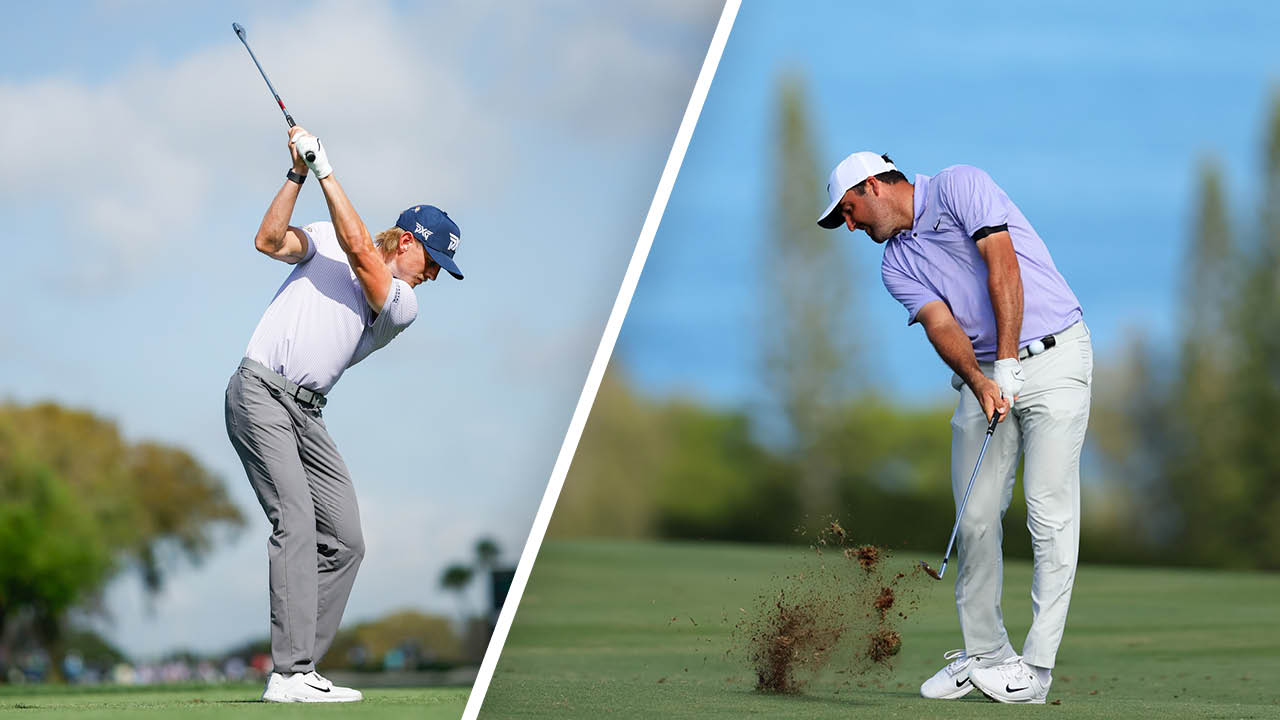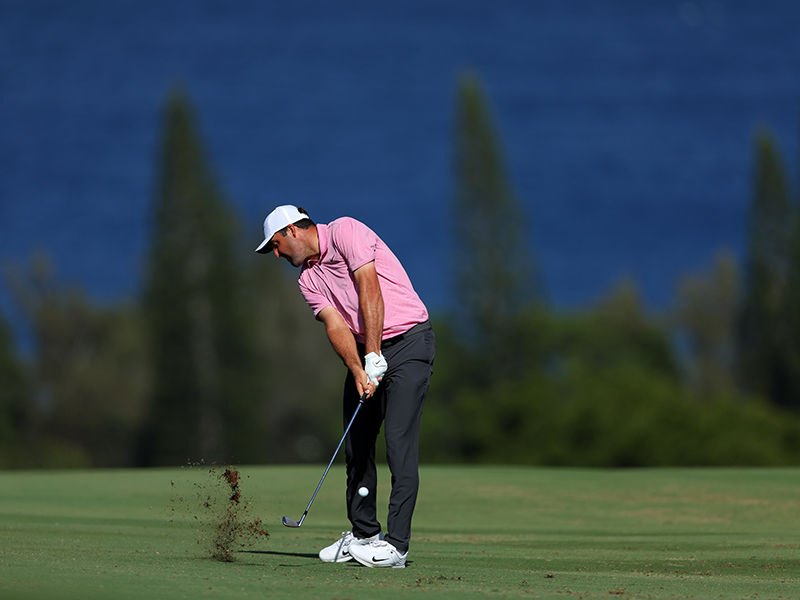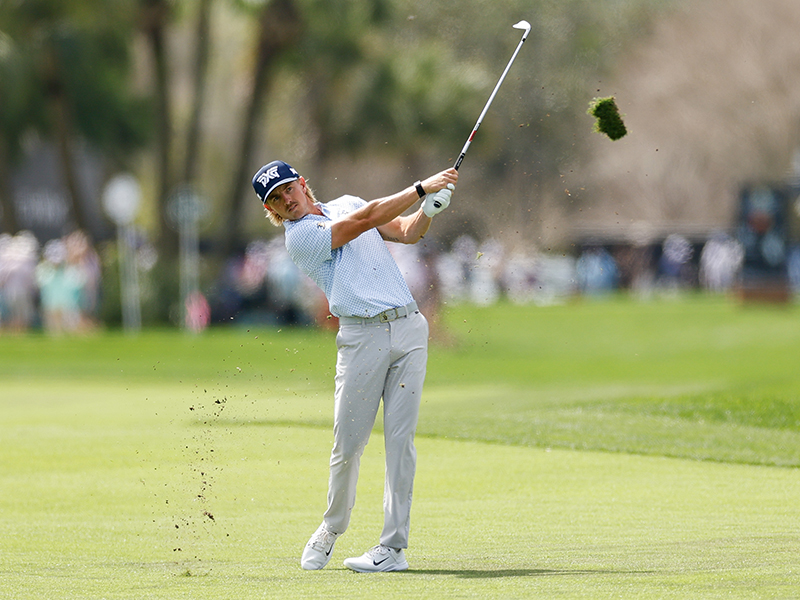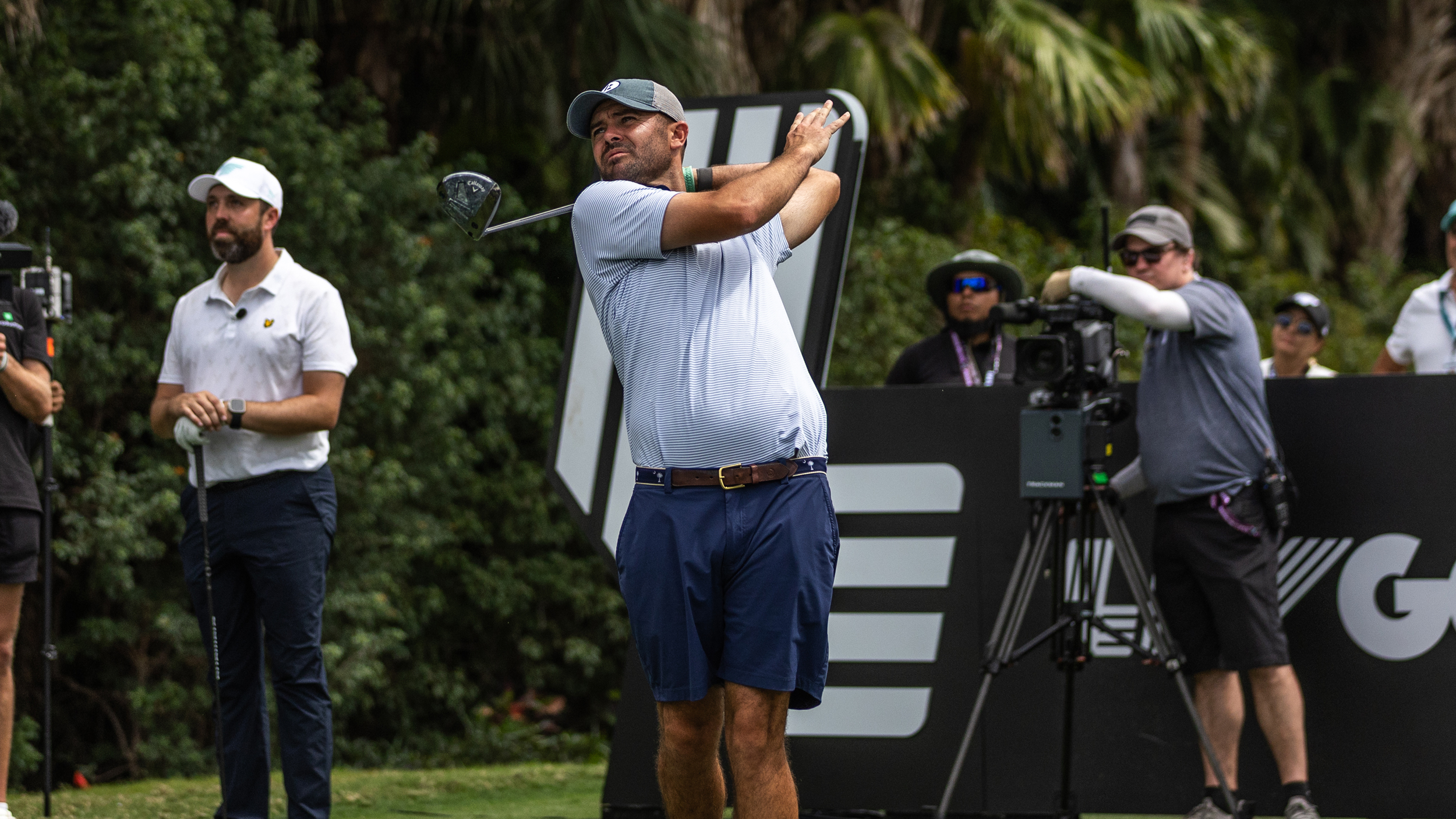4 Golf Swing Timing Drills To Improve Your Strike
These golf swing timing drills, from Golf Monthly Top 50 Coach Andrew Reynolds, will help you improve the consistency of your ball-striking...


Success with your golf swing often comes down to fine margins, which is why it's so important to make sure golf swing timing drills are a regular part of your preparations. It's not realistic to expect clean and crisp contact with every shot, but it's certainly possible to improve your ball-striking.
A key part of that is understanding how to hit an iron shot, and with timing playing such an important factor we asked Golf Monthly Top 50 Coach Andrew Reynolds to share some of his favourite drills...
Golf Swing Timing Drills
Let's be honest, we have all been there! A couple of poorly struck shots that cause a shank or a topped shot and suddenly your timing is totally gone. Confidence is huge in golf, and when you feel like you aren't timing it right, that can quickly abandon you along with your hopes of a decent score.
These four golf swing timing drills are some of my favourites to re-discover that rhythm and are a great way to get better at golf without changing your swing...
1. Half-swings
Whether you find yourself in the middle of your round or at the driving range practicing your swing, losing your timing can be crippling. One of the best pieces of advice I can give is to make half-length, half-paced swings.
You can do this on the course by making practice swings, using the half-swings prior to taking each shot. If you're at the range, try hitting your first five or ten shots using that slower, shorter swing. You can then up the ante as you start to rediscover your rhythm.
Remember, it needs to be quite a slow movement back and through. It's one of the things tour players do that you don't and it works so well because it helps you feel the clubhead better during the swing and will naturally slow you down.
Get the Golf Monthly Newsletter
Subscribe to the Golf Monthly newsletter to stay up to date with all the latest tour news, equipment news, reviews, head-to-heads and buyer’s guides from our team of experienced experts.

Scottie Scheffler is one the best ball strikers in the world and his timing will be a big factor in that consistency
2. Acceleration drill
Another reason your timing can be off stems from trying to hit the ball too hard. Golfers often wonder how long their backswing should be and in my experience, the desire for extra distance causes it to get too long. The knock-on effect is an early wrist extension in the downswing, which restricts your power and often disrupts your timing.
The simple way to stop yourself casting in the golf swing (releasing the club too early) is to make a slightly shorter backswing (two-thirds the normal length) and then swing through to a full finish. This will help you accelerate the club through impact and find that crisp contact you are looking for. If you are catching your shots a little thin or fat, this is a great drill to use.
3. Find your feel
The more you worry about your golf swing timing being off, the more tension you will likely build up in your hands and arms. This is a double-whammy of destruction for your swing, as you often then try to hit the ball too hard, with lots of grip pressure, and this results in a loss of mobility in your wrists.
Consider recent PGA Tour winner Jake Knapp's swing. His timing and tempo is sublime and there doesn't appear to be one ounce of tension as he crushes it 350 yards down the fairway.
To get the 'feels' back, try holding your fingers very lightly on the grip. When you set-up with the club in your hands, feel as if the forefinger and thumb of both hands are in control of the club. The rest are just there for support, and often the softer you grip the club the more it will flow and release through the ball.

Recent PGA Tour winner Jake Knapp has a smooth, rhythmical swing with effortless power
4. Synchronisation check
There are occasions when, try as you might, you aren’t able to rectify the problem while out on the course. That’s fine – even the world’s best players have days when their timing is off. However, if you are serious about rectifying the issue, head to the range and hit a series of 50-yard wedge shots.
The aim here is to keep the club shaft out in front of you at all times. At the address, top of backswing, impact and in the finish, the clubhead should be pointing directly away from your chest. Try to get this image in your mind as you swing and the synchronisation between your body and arms will improve.

Location: Royal Cinque Ports
Andrew was appointed Head Professional at Royal Cinque Ports in 1978, aged just 23. He is only the sixth professional in the club's 125-year history. From 2010 to 2013, he was lead coach for the Mens England “A” squad and helped work with many established European Tour players. Andrew also enjoyed success on the European Senior Tour, most notably his top-20 finish in the Senior Open Championship at Turnberry.
Teaching philosophy:
Different golfers have different aims, so players' hopes must be discovered before a ball is struck. The player is buying our experience to take them on a journey which will, hopefully, exceed their expectations. I try to keep the learning experience fairly light to keep the player relaxed and make the time together enjoyable for us both. We generally need to ‘de-clutter’ players' golfing brains and put a filter system in place to help people understand the important factors.
Most significant influences:
Ernest Jones’s book, ‘Swing the Clubhead’, who stressed that if your set up was neutral, balanced and correct, all body actions were responsive to the club swinging. Peter Thomson, too. He chatted to Henry Longhurst, whom he allowed to explain his simple thinking - set up squarely, point the club at the target, take it away from the ball on the same path that the club attacks the ball on, then from the top of the backswing just bring it back to the ball. Both Jones and Thomson understood the difference between cause and effect. Modern technology allows us to analyse the golf swing in a very technical manner, which has now proved that both were ahead of their time in making a golf swing a simple exercise. We must remember that it’s the clubhead that we are swinging.
Advice for practice:
A structured and disciplined practice session is the only way to develop your golfing skills to the maximum. Always make sure that your setup is perfect before any swing begins - it’s pointless to work on a swing change with an inconsistent and changeable setup. A different setup means a different swing.
-
 Why Machrihanish Golf Club Needs To Be On Every Golfer's Bucket List
Why Machrihanish Golf Club Needs To Be On Every Golfer's Bucket ListThe rugged, natural and historic Machrihanish Golf Club is a spectacular Old Tom Morris design that is the epitome of pure links golf
By Elliott Heath
-
 Reports: Wesley Bryan Suspended By PGA Tour After Playing In LIV Golf Duels
Reports: Wesley Bryan Suspended By PGA Tour After Playing In LIV Golf DuelsThe 2017 RBC Heritage winner is said to have been suspended by the PGA Tour after teeing it up in the recent LIV Golf creator event in Miami
By Elliott Heath